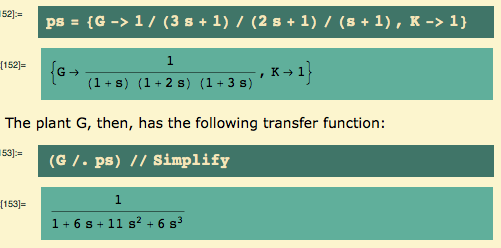introduction
I want to see exactly how we get offset under P-only control, and how PI control eliminates the offset. I’m going to use Example 3 again… I’m going to look at P and PI control… and I’m going to use the Tyreus-Luyben (“T-L”) tuning rules, which we’ve seen before.
When I started this, I was wondering about two things:
- Is the control effort nonzero when we have offset?
- We don’t always have offset under P-only control, do we?
I can’t say I’ve become an expert in offset, but I’m a little more comfortable with it. Now what I’d like to know is why the control effort goes to zero when we do not have offset – but that’s a question still looking for an answer.
Let me tell you up front what we will find:
- With P-only control, we may have offset: the output will not tend to the set point.
- In that case, the use of PI-control will eliminate offset.
- But if our plant (G) has a pole of any order at the origin, then P-only control does not lead to offset.
- In that case, you could imagine that the plant itself includes integral control.






